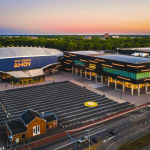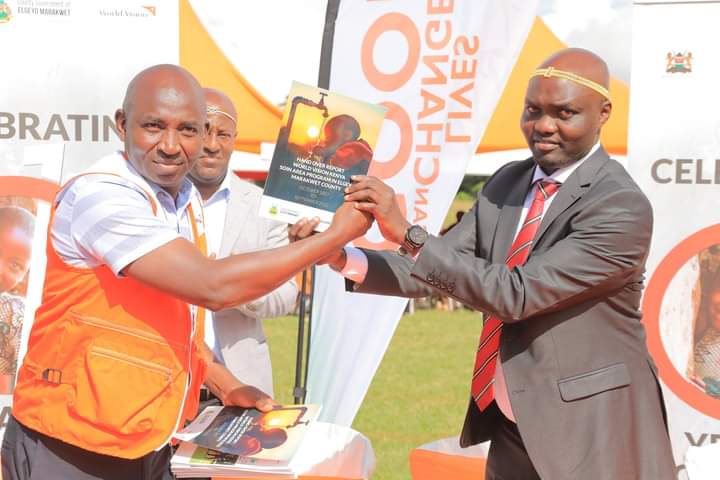How can infrastructure connectivity in the Aberdare landscape be harmonized with the preservation of its wildlife and ecosystem?
This question arises within a legal context, concerning the proposed realignment of the Mau Mau Road (Ihithe-Aberdare Forest-Kahuruko-Ndunyu Njeru Road) —a 25-kilometer stretch set to traverse a dense forest canopy.
In January 2024, the National Environment Management Authority (NEMA) approved the controversial road construction project, issuing an environmental impact assessment license, which indicates that 75 hectares of bamboo, 14 hectares of montane forest and 14 hectares of moorlands would be destroyed in the construction.
The NEMA license is valid for two months since its issuance, during which the project must begin.
However, the plan now hangs in limbo.
The Conservation Alliance of Kenya (CAK), has contested NEMA’s approval, lodging an appeal with the National Environment Tribunal. They said that the proposed road poses significant environmental threats to the fragile Aberdare ecosystem, warranting a reversal of NEMA’s decision.
The conservation group, comprising 73 conservation organizations, said that NEMA’s approval did not consider the ecological, social, and economic attributes of the water catchment and key biodiversity area.
In a phone interview with Kass Media, Steve Itela, the CEO of Conservation Alliance Kenya, said that, “We at CAK filed a case at the National Environmental Tribunal and the East African Wildlife Society went to the Environmental and Land Court. This is to prevent the widening of the road within the park boundaries.”
He said that their position isn’t simply about opposing the road. Instead, they’re urging the government to explore an alternative to connect communities without encroaching on the Aberdare National Park.
“We are for the road, except that it has to be sustainable and viable for the benefit of the people.” Itela said.
The Alliance urges the government to prioritize the existing Nyeri-Ndaragwa-Nyahururu-Ol Kalou-Miharati-Ndunyu Njeru route, which they argue offers a more environmentally friendly solution that would safeguard biodiversity and sensitive ecosystems.
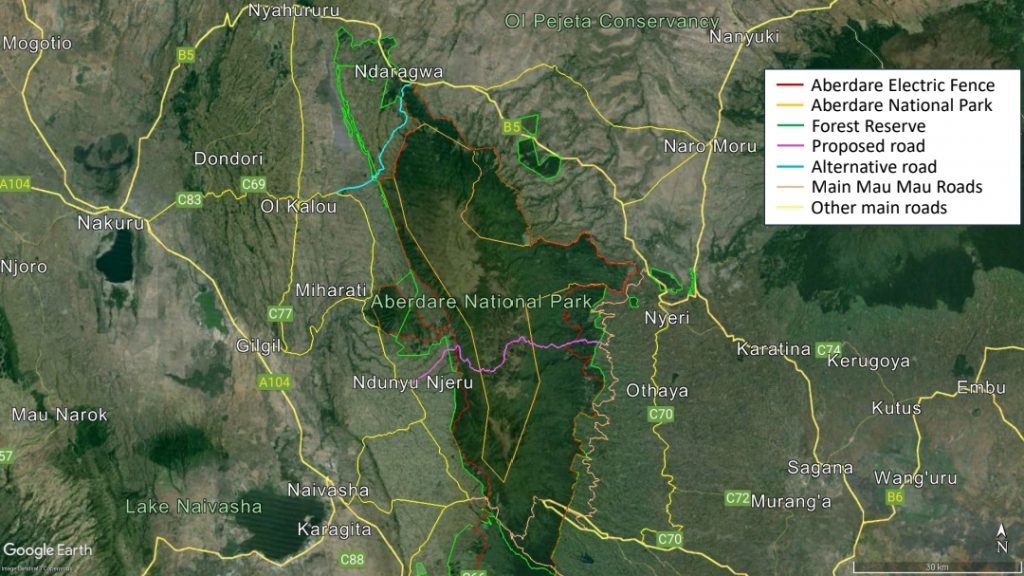
They said that the alternative route should be upgraded to class A status and consider dualization, which involves expanding the road to include two lanes in each direction.
“This alternative road will not only stimulate economic growth in multiple regions but also improve connectivity between Nyeri, Nyandarua and Nakuru, benefitting countless communities,” said Dr. Dominic Walubengo, Chairman, National Environment Civil Society Alliance of Kenya ( NECSA-K).
“Our objective is to ensure that the alternative route is upgraded to meet the necessary standards for development, providing a shorter and more viable connection between county headquarters.” Itela added.
The conservationists said the alternative road would save the government billions of shillings in construction costs. The alternative road, which is estimated to cost 3.5 billion shillings, is 1.5 billion shillings cheaper than the KES4.4 billion shillings that would cost the government for the proposed Mau Mau road.
“We urge the government to consider this alternative road that is better for the environment; for the people and for the treasury,” said Christian Lamberecht, the Executive director of Rhino Ark Kenya Charitable Trust.
“The alternative route will not interfere with wildlife as it lies outside the Aberdare Electric Fence and is shorter to connect Nyeri and Ol kalou, the two headquarters of Nyeri and Nyandarua counties.” Lambrechts added.
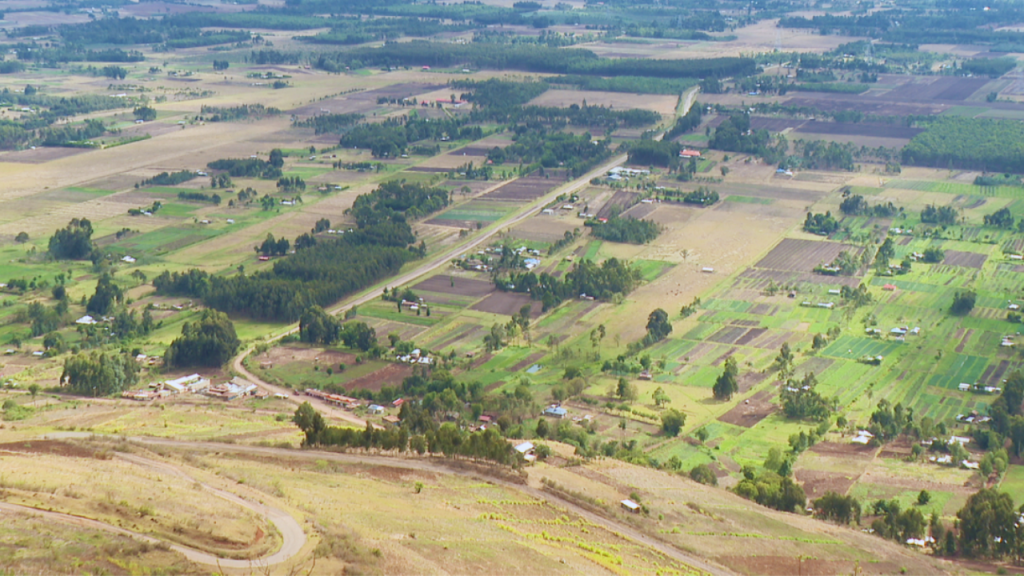
For the communities residing along the proposed alternative routes, the prospect of this consideration has been long awaited.
Paul Mwangi Ruita, a resident of Kariamu trading center where the alternative road begins, at the Junction of Ndunyu Njeru- Ol kalou road, said that for years, they have been promised road repairs, with surveys conducted numerous times. However, there has been no improvement in the situation.
“I don’t know why the government is allocating resources to the Mau Mau road which has a case to answer… We have a suitable road that connects Ndaragwa sub county to its headquarters just up there in Ol Kalou, a road that will benefit many people,” Ruita said, “Year comes and year goes, we keep hearing the road will be fixed, but nothing.”

The local residents have resorted to taking a longer route to reach Nyeri, which involves detouring through Nyahururu before continuing on to Nyeri.
“It’s been a hardship,” Ruita said. “To get to Nyeri we have to commence our journey at night, in order to get to Nyeri in time for us to conduct business and come back and yet Kariamu-Ndunyu Njeru road is a shortcut that would ease our struggles were it to be properly fixed.”
He said that without proper roads, transporting goods from the farms in the Kariamu-Shamata-Ndaragua route becomes time-consuming and costly. Transporters, who carry bags of produce, encounter hurdles such as accidents and difficulties maintaining balance due to the rough roads.
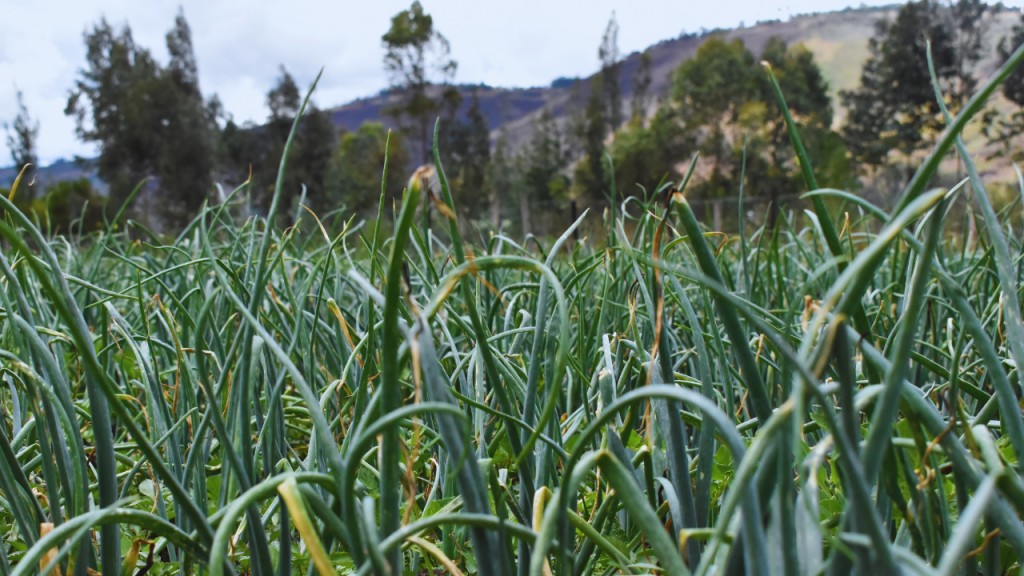
Elijah Waithaka, a local trader who procures produce from farms in Kariamu and utilizes motorcycles for transportation, spoke of the hurdles they encounter on the road.
“Vehicles frequently get stuck, motorcycles are often damaged, and many times we rely on the bystanders to assist us when we fall while riding along this road,” Waithaka said.
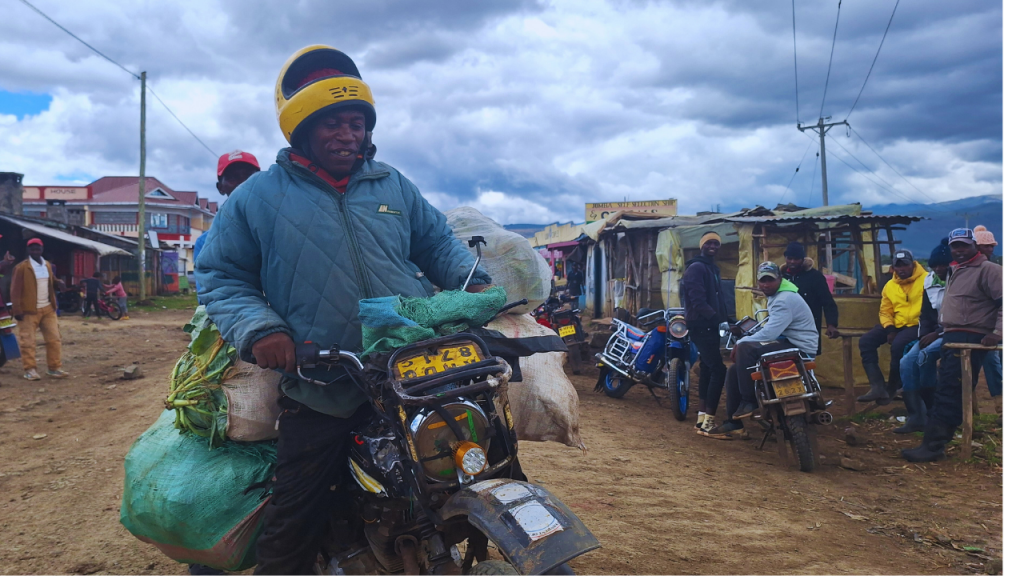
The 33 Kilometer Kariamu- Ndunyu Njeru road, situated on the edge of the Aberdare park, winds through a hilly terrain, its surface marred by signs of wear and neglect. Gravel patches dot the roadway, while large puddles accumulate in the low-lying areas, creating obstacles for vehicles and motorcycles alike.

As the rainy season sets in, the road becomes increasingly waterlogged, making it even more hazardous and impassable in some cases.
According to Stephen Kariuki Wamunyito (commonly known as Kafefe), a resident of Shamata ward in Ndaragwa constituency, Aberdare sub-county, where farming and livestock rearing are the primary economic activities, the main obstacle they face due to poor road infrastructure, is the lack of a market to sell their produce after harvest.
“We’re encountering significant challenges with this road. For instance, when we milk our cows on the farm, we depend on donkeys to transport the milk to the main road. There, we wait for lorries to collect it. Unfortunately, these vehicles often break down due to the poor road conditions, resulting in delays in delivering the milk to our clients,” said Wamunyito.
He said that the transportation costs for the milk are also high and do not correspond with the buying and selling prices, leading to reduced profitability and buyers from other areas opt out of purchasing produce in the area.

Wamunyito added that in cases of medical emergencies, residents resort to alternative modes of transportation, such as placing the ailing on potato sacks and carrying them on foot to the hospital, because the public vehicles operating along the route only pass by the area early in the morning or late in the evening.
Joyce Wairimu Njoroge, a 60-year-old mother of nine, said that all her children left home due to the harsh living conditions in the area.
“My children left because they saw no future here and chose to relocate elsewhere. There was nothing for them to do. They tried farming, but the harvest had no value. The road is terrible, and buyers don’t come here, so we end up feeding the harvest to the livestock,” Wairimu said, “Now I am forced to live all by myself.”

She said that if the roads were better, she could be living with her children, receiving care and conducting farming activities peacefully in her old age.
“We don’t feel like we are living in Kenya.” The local farmers who were speaking to the media at Shamata ward, said.
Haron Gachau, the vice chairman of the Water Resource Users Association (WRUA) in Huhirio village, Wanjohi ward, said that the proposed site for the Mau Mau road construction lacks significant population and activity levels compared to their current area and that by cutting down the trees to make way for the road, the construction would be tampering with the water tower.
“We don’t see the value of Mau Mau road. We are asking the government to consider working on this road you are calling alternative, which connects various regions, including Nyeri, Nakuru, and smaller towns, so that we can get value from our farms.” Gachau said.

The residents who spoke to Kass Media, said that Kariamu-Ndunyu Njeru alternative road holds significant benefits for a larger population.Their argument focused on several key points: firstly, the road would not disrupt the natural movement of wildlife; secondly, farmers would not face restrictions on transporting their produce day and night; and thirdly, it offers a shorter route connecting Ol Kalou and Nyeri.
As it sits now, legal battles unfold and voices of concern grow louder, highlighting the pressing need for sustainable solutions that balance the demands of progress with environmental preservation.
“The legal proceedings are ongoing, with delays caused by the judge’s absence and subsequent appeal by the lawyers.” Steve Itela said.
This isn’t the first time legal action has been taken to protect the Aberdare range. In 2009, NEMA ruled in favor of the conservation group, halting road construction due to the project’s failure to offer alternative routes to mitigate adverse impacts on the natural forest.
In a letter dated October 27, 2009, NEMA acknowledged the significant impacts on the natural forests during construction, stating, “The proposed project will have massive impacts on the natural forests during construction. It is possible that some endangered tree species may be affected.”
The conservation groups believe alternative road projects will accomplish many of the same goals as a new highway, while avoiding damage to the environment and that is why they are relying on the court to make the right decision on the highway project.
Between now and then, the public living along the proposed alternative road stretch is awaiting to be counted. They have said that no one has reached out to them to ask what they want, and they are hopeful that the government will consider their plea, based on their numbers, to make the road construction changes they have been waiting for, for years.
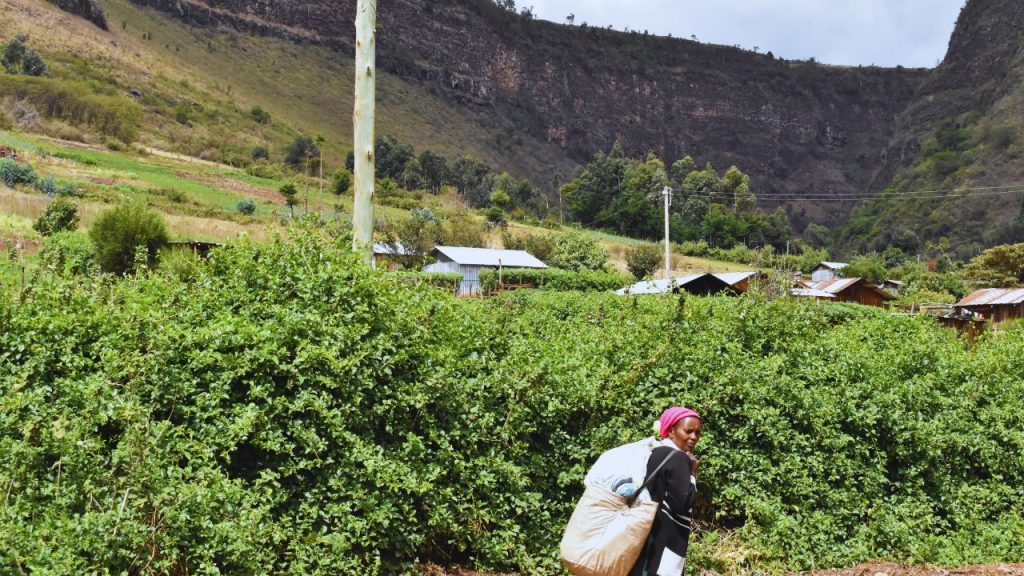
“We are asking the government to listen to us. We desperately need the Kariamu-Ndunyu Njeru road to be built. We have a large number of farmers here, we work hard in our farms, but we’re struggling to sell our produce, due to the terrible road conditions,” said Ndiragu Muchai, the village elder of Huhirio village in Kipipiri constituency,
Muchai said that the road is also disrupting family affairs, where women in the community are hesitant to have children because of the lack of nearby hospitals. “The road is in such bad shape that getting to a maternity ward is difficult and risky.”

He urged the government to hear the community’s plea, and raised concerns about the Mau Mau road plan.
“The road they want to construct over there closes at night. What’s the point of that? They’ll destroy our forest and wildlife, disrupt the water sources. And for what?” Muchai asked.



